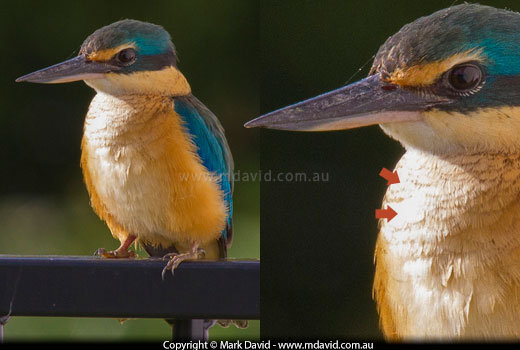
It’s a common problem, but easy to avoid. You’ll need access to either some RAW editing software or some image editing software like Photoshop.
Previous tip | Next tip

Blown-out highlights in the plumage of a Sacred Kingfisher.
You know how you can take a photo in strong light, and then find the white highlights get blown out? By blown-out, I mean so badly overexposed that they end up totally white, even after pulling levers in your software afterwards.
Don’t you hate that?
You don’t have to put up with it though.
All you have to do is to deliberately underexpose your photos on very bright days. You can do that with exposure compensation. That way, the highlights will be exposed correctly and capture some detail. Then when you load the files into your computer, you lighten the shadows so as to make the rest of photo correctly exposed too.

Same bird photographed with minus one stop of exposure compensation.
You can see the difference in these photos of a Sacred Kingfisher. The picture at the top of this page was taken with the default settings. The one just above was taken with about one stop down in exposure compensation and then corrected in the computer later. Need more explanation? Here’s that link again to the article about exposure compensation, and a more in-depth workflow for working in harsh light.








